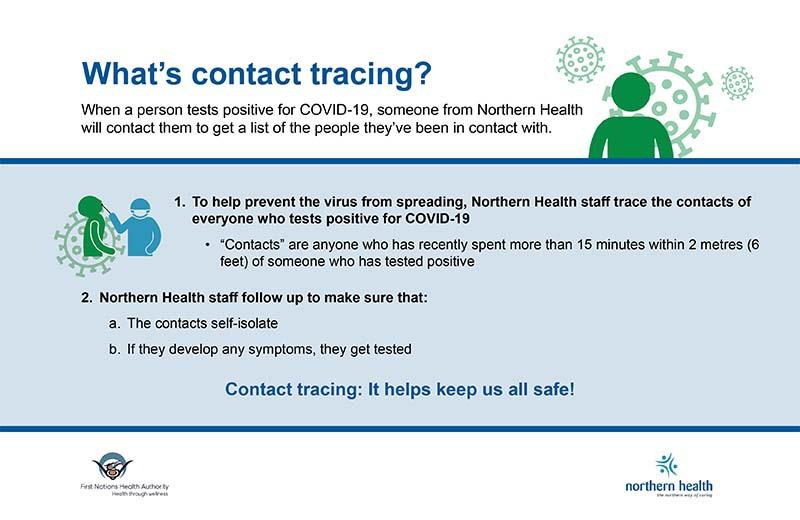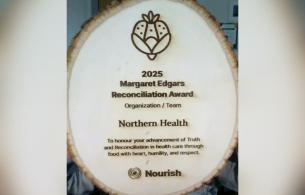[Editor's note: This story was accurate at the time of posting. Some processes may have been updated since then, in regards to contact tracing. Please review this recent information bulletin.]
“Contact tracing” is a term we’re hearing more and more these days. It’s a powerful tool to help contain the spread of COVID-19 – and it’s especially important given the recent rise in cases throughout BC.
For example, BC Minister of Health Adrian Dix said on November 19 that BC will soon have more than 1,000 contact tracers, including 76 culturally sensitive contact tracers hired through the First Nations Health Authority.
What is contact tracing, exactly?
When someone’s diagnosed with COVID-19, the contact tracers’ job is to talk to that person right away to find out who they’ve recently been in contact with.
They’re looking for close contacts. These are people who were within six feet of the sick person (let’s call him Fred) for more than 15 minutes, starting from two days before Fred first had symptoms. Each of these people will have to self-isolate for 14 days, whether they have symptoms or not.
Armed with the list of people who may have been exposed, Northern Health can now check in on Fred’s contacts each day to see how they’re feeling. And if any of them develop symptoms and test positive for COVID-19, the contact tracers swing into action again to track down that person’s contacts.
Why contact information is so important
Contact tracers depend on Fred to share as much accurate information as he can when contact tracers first speak to him. The smaller Fred’s social circle, the fewer contacts he has to remember. That’s why it’s important to minimize your socializing and have the contact information of those you’ve spent time with, readily available.
Privacy is a high priority
Throughout the contact tracing process, a high priority is placed on maintaining the privacy of Fred and his close contacts. Any information Fred shares with a contact tracer is only shared to his circle of care, or the group of health care providers helping Fred.
Contact tracing depends on people to willingly share information – that’s why it’s crucial for people to feel comfortable coming forward if they have symptoms of COVID-19, and to give information about close contacts. Northern Health doesn’t use public forums to discuss cases and only issues public exposure notices when efforts to reach all possible contacts have failed.
When is a public exposure alert issued?
A public exposure (alert) is issued when public health officials can’t identify and directly contact everybody who may have been exposed to a case of COVID-19 in a public setting where they may have been in close contact.
More contact tracing information
Contact tracing is a very effective tool to stop the spread of this virus: it helps keep us all safe.














Comments